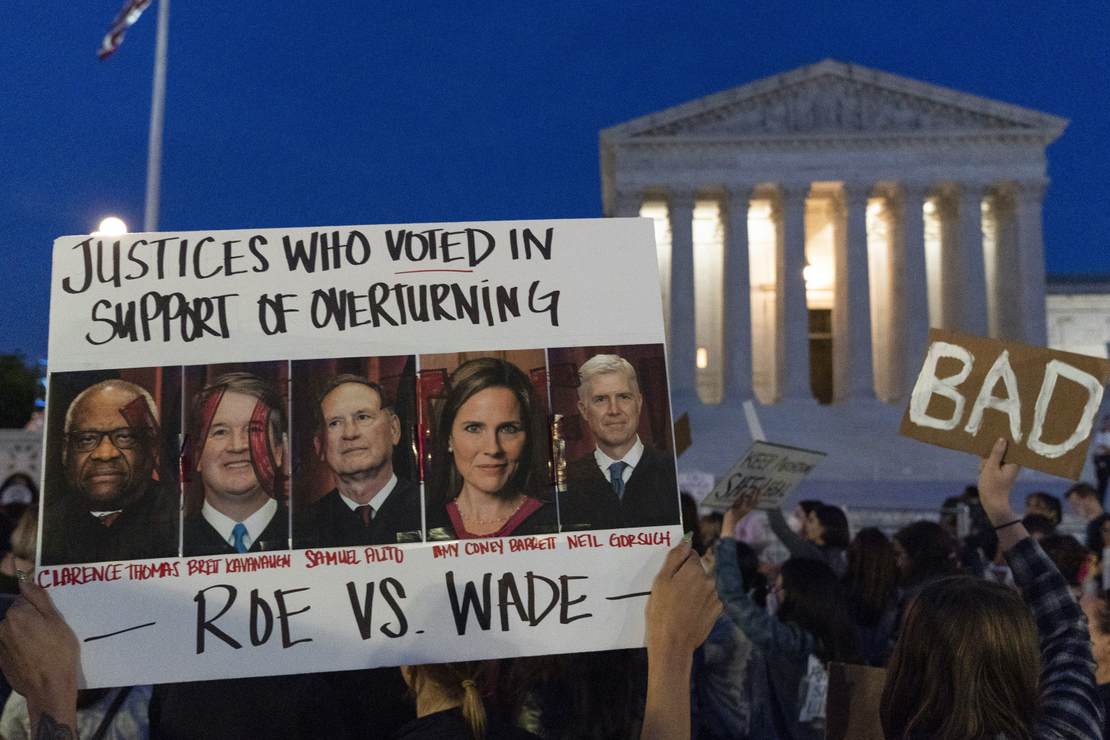
Made you look.
When the Supreme Court added today to their decision-release calendar, everyone expected that the justices might want to dispense with the Big Stinky Elephant in the Room — the case of Dobbs v Jackson Womens Health, a draft opinion from which got released two weeks ago. Failing a fully formed opinion, some speculated that the court might issue a per curiam order that announced the decision and vote in order to settle the matter until the opinions got written.
Instead, today’s orders produced nothing of note, and the two decisions released — while interesting in themselves — had nothing to say on the issue of abortion. The first decision came in Patel v Garland, a 5-4 decision that refused to expand judicial review of deportation findings at the Department of Justice under current statute. Justice Neil Gorsuch joined the three liberal jurists in dissent, pointedly arguing that this left those who face deportation issues on faulty data without any recourse. The majority, however, pointed out that Congress had explicitly limited judicial review in these cases, and that Congress would have to amend the statute to allow for judicial interventions even in cases with factually inaccurate DoJ findings.
The other ruling came in the appeal Ted Cruz launched against the Federal Election Commission, which has prevented his 2018 Senate campaign from raising funds to cover the unpaid portion of his personal loan. A 6-3 majority ruled that the FEC’s restriction on such activities violate the First Amendment, as the connection to the regulation and corruption is too ambiguous to stand:
2. Section 304 of BCRA burdens core political speech without proper justification. Pp. 10–22.
(a) The loan-repayment limitation abridges First Amendment rights by burdening candidates who wish to make expenditures on behalf of their own candidacy through personal loans. Restricting the sources of funds that campaigns may use to repay candidate loans increases the risk that such loans will not be repaid in full, which, in turn, deters candidates from loaning money to their campaigns. This burden is no small matter. Debt is a ubiquitous tool for financing electoral campaigns, especially for new candidates and challengers. By inhibiting a candidate from using this critical source of campaign funding, Section 304 raises a barrier to entry—thus abridging political speech. Pp. 10–13.
(b) The Government has not demonstrated that the loan-repayment limitation furthers a permissible goal. Any law that burdens First Amendment freedoms, even slightly, must be justified by a permissible interest. Pp. 13–22.
READ RELATED: Feel-Good Friday: A Woman Fulfills Her Dream of Opening a Restaurant, and Makes History in the Process
(i) The only permissible ground for restricting political speech recognized by this Court is the prevention of “quid pro quo” corruption or its appearance. See McCutcheon v. Federal Election Comm’n, 572 U. S. 185, 207. Here, the Government argues that the contributions at issue raise a heightened risk of corruption because they are used to repay a candidate’s personal loans. But given that these contributions are already capped at $2,900 per election in order to prevent corruption or its appearance, the approach of adding an additional layer of regulation is a significant indicator that the regulation may not be necessary for the interest it seeks to protect. See id, at 221. Because the Government is defending a restriction on speech, it must do more than “simply posit the existence of the disease sought to be cured”; it must instead point to “record evidence or legislative findings” demonstrating the need to address a special problem. Colorado Republican Federal Campaign Comm. v. Federal Election Comm’n, 518 U. S. 604, 618. “[M]ere conjecture” is “[in]adequate to carry a First Amendment burden.” McCutcheon, 572 U. S., at 210. Yet the Government is unable to identify a single case of quid pro quo corruption in this context, even though most States do not impose a limit on the use of post-election contributions to repay candidate loans. Pp. 13–16.
(ii) In the absence of direct evidence, the Government turns to a scholarly article, a poll, and statements by Members of Congress to show that the contributions used to repay candidate loans carry a heightened risk of at least the appearance of corruption. All of this evidence, however, concerns the sort of “corruption,” loosely conceived, that this Court has repeatedly explained is not legitimately regulated under the First Amendment. Nor is it equivalent to “legislative findings” that demonstrate the need to address a special problem. Pp. 16– 19.
(iii) As a fallback argument, the Government analogizes postelection contributions used to repay a candidate’s loans to gifts because they enrich the candidate as opposed to the campaign’s treasury. But this analogy is meaningful only if the baseline is that the campaign will default. The record suggests, however, that winning candidates are commonly repaid in full. For these candidates, post-election contributions bear little resemblance to a gift; they instead restore the candidate to the status quo ante. As for losing candidates, the Government does not provide any anticorruption rationale to explain why contributions to those candidates should be restricted. Finally, the Government argues for deference to Congress’s “legislative judgment” that Section 304 furthers an anticorruption goal. Given scant evidence of corruption, deference to Congress would be especially inappropriate where, as here, the legislative act may have been an effort to “insulate[ ] legislators from effective electoral challenge.” Nixon v. Shrink Missouri Government PAC, 528 U. S. 377, 404 (BREYER, J., concurring). In the end, it remains the role of this Court to decide whether a particular legislative choice is constitutional. Sable Communications of Cal., Inc. v. FCC, 492 U. S. 115, 129. Pp. 19–22.
It’s an interesting argument, even if it’s a bit too inside-baseball for common interest. If anything, it tends to build on the Citizens United decision, making that precedent a bit more firm. The majority cites Citizens United three times, while the dissent doesn’t mention it at all, but instead relies on a policy argument that this open-ended ability to fundraise ex post facto opens the door to corruption. The argument opposing that would be to note that corrupt activities can get prosecuted by the DoJ as criminal matters rather than regulatory restrictions on campaign speech and financing.
The real news, though, is that the court hasn’t finished with Dobbs. That could mean that the vote on the case is still fluid, although the most recent leaks from the court suggest that John Roberts is the only justice still wavering. Roberts may want some time to craft a different result with a less-ideological split, but the leak has probably blown up any opportunity for that kind of political campaigning. The most likely explanation is that the dissenter still haven’t crafted their drafts and circulated them yet, and that the court would rather release the Dobbs ruling as normally as possible — in other words, only after all of the opinions, concurrences, and dissents are fully formed and ready for publication.
When will that be? I’d bet that the court would like it to be as soon as possible, but bet on the end of June.
Source:






